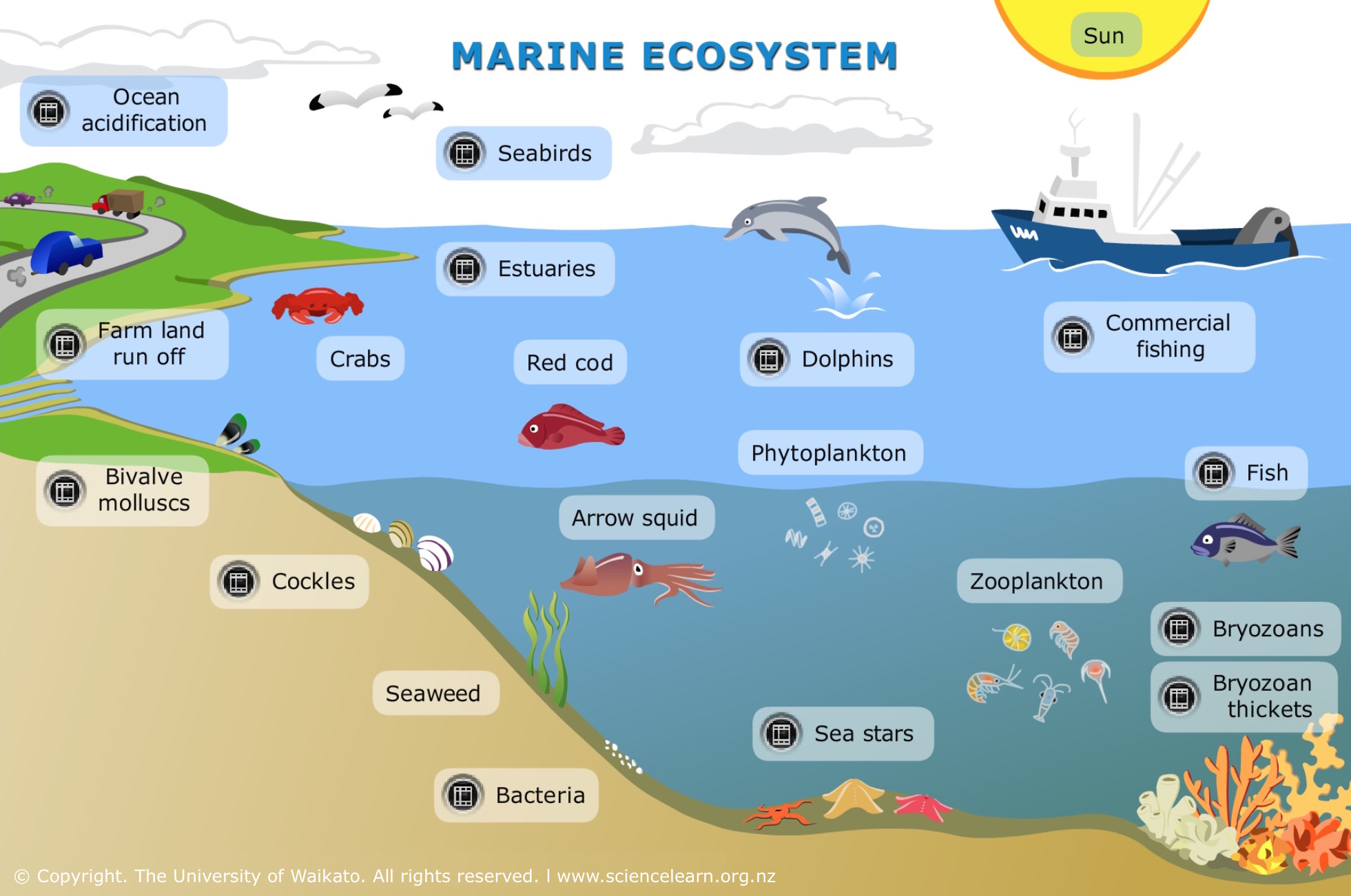Topic grassland ecosystem food chain: Explore the vibrant tapestry of life within grassland ecosystems, where every creature plays a crucial role in a complex and fascinating food chain.
Table of Content
- What are the primary producers and consumers in a grassland ecosystem food chain?
- Overview of Grassland Ecosystems
- Primary Producers in Grasslands
- Primary Consumers: Herbivores
- Secondary Consumers: Carnivores
- Tertiary Consumers: Apex Predators
- YOUTUBE: Food Webs and Energy Pyramids: Foundations of Biodiversity
- Decomposers: Essential for Nutrient Cycling
- Grassland Food Webs: A Complex Network
- Impact of Human Activities on Grassland Food Chains
- Conservation Efforts: Protecting Grassland Ecosystems
- Case Studies: Grassland Ecosystems Around the World
What are the primary producers and consumers in a grassland ecosystem food chain?
In a grassland ecosystem, the primary producers in the food chain are the grasses. They are able to produce food through photosynthesis, using the sun\'s energy.
The primary consumers in the grassland food chain are typically herbivores that feed on the grass. These can include insects like grasshoppers and caterpillars, as well as larger herbivores like deer and bison.
Here is a breakdown of the grassland food chain:
- Primary producers (grass)
- Primary consumers (insects, herbivores)
- Secondary consumers (carnivores, such as spiders and birds)
- Tertiary consumers (top-level predators, like foxes or wolves)
It\'s important to note that this is a simplified representation of the grassland food chain, and there can be numerous interactions and additional levels of consumers within the ecosystem. Food webs, which show the interconnectedness of various organisms in an ecosystem, provide a more complex and accurate description of the energy flow between organisms.
READ MORE:
Overview of Grassland Ecosystems
Grassland ecosystems, spanning continents and varying in climate and wildlife, are vital for biodiversity and ecological balance. Characterized by vast open spaces filled with grasses, herbs, and shrubs, they support a wide range of life forms from microscopic soil organisms to some of the planet"s largest mammals.
- Global Distribution: Found across every continent except Antarctica, grasslands vary from the savannas of Africa to the prairies of North America and the steppes of Asia.
- Climate: These ecosystems experience a range of climatic conditions, from semi-arid to subtropical, with distinct wet and dry seasons that influence the types of species they support.
- Flora and Fauna: Grasslands are home to a diverse array of species, including numerous grass species, wildflowers, insects, birds, reptiles, and mammals.
- Ecosystem Roles: They play critical roles in carbon sequestration, soil formation and preservation, and serve as grazing grounds for livestock and wildlife.
- Human Interaction: Human activities, such as agriculture, urbanization, and overgrazing, have significantly altered grassland landscapes, highlighting the need for conservation efforts.
Understanding the dynamics of grassland ecosystems is crucial for their conservation and the sustainability of their food chains, which are intricate networks of energy flow and nutrient cycling essential for all life forms within these habitats.
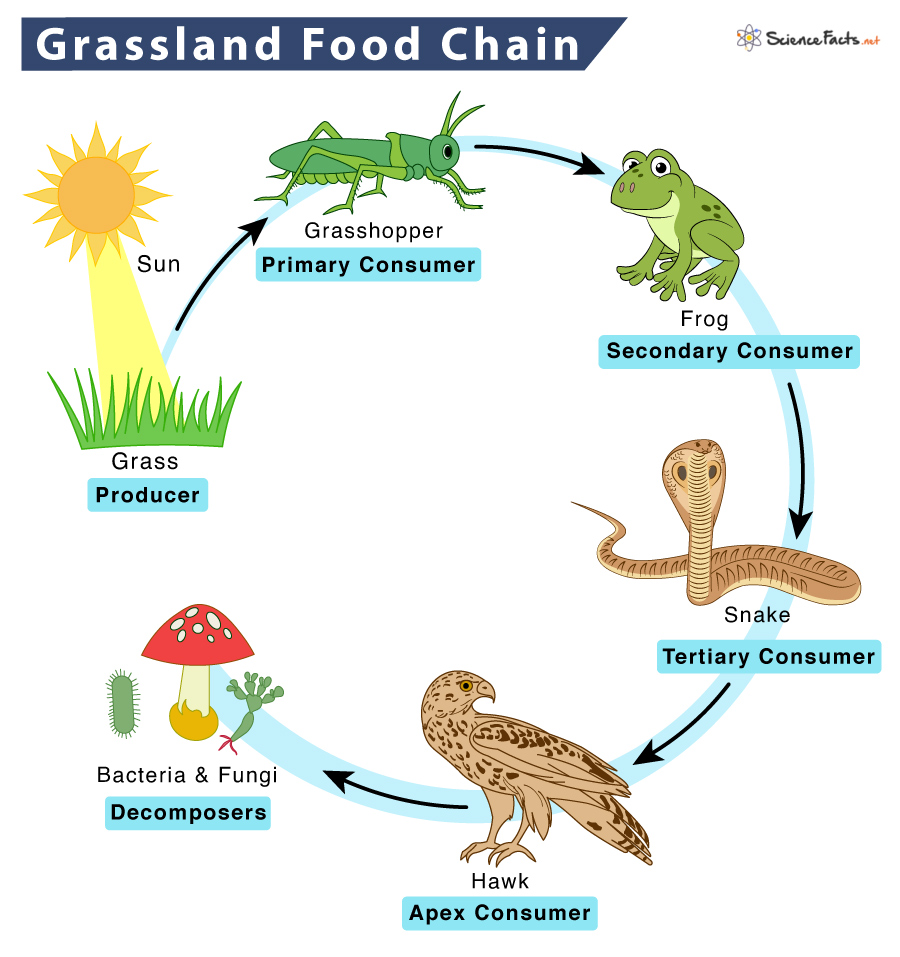
Primary Producers in Grasslands
Primary producers form the foundation of the grassland ecosystem food chain. These are mainly grasses, but also include herbs and shrubs, which use sunlight to perform photosynthesis. This process converts carbon dioxide and water into organic materials, using sunlight as energy, thereby producing oxygen as a byproduct. Grasslands, characterized by their vast open spaces covered with tall or short grasses, are crucial habitats for a multitude of wildlife and play a key role in the ecosystem.
- Grasses: The dominant primary producers in grasslands, grasses like buffalo grass, blue grama, and wild oats, utilize sunlight to create energy-rich nutrients.
- Herbs and Forbs: These plants add diversity to the grassland flora and provide essential nutrients to various herbivores.
- Shrubs: Though less common, shrubs such as sagebrush contribute to the biodiversity and offer alternative food sources and shelter.
These primary producers are vital for the survival of the ecosystem. They not only provide food for a variety of herbivores but also help stabilize the soil and prevent erosion. Their extensive root systems are key for water retention and soil health, making them indispensable for the overall functionality of grassland ecosystems.
Through photosynthesis, primary producers convert solar energy into chemical energy, which is then passed through the food chain to herbivores and predators. This energy transfer is fundamental to the functioning of the ecosystem, supporting a diverse array of species and maintaining ecological balance.
Primary Consumers: Herbivores
Primary consumers in grassland ecosystems are predominantly herbivores that feed on the primary producers, such as grasses, herbs, and shrubs. These animals are crucial for transferring energy from the plants they consume to the secondary consumers that prey on them. The diversity of herbivores in grasslands supports the complex food web that characterizes these ecosystems.
- Grazers: Large ungulates like bison, zebras, and wildebeest, which feed on grass, play a vital role in maintaining the health of grasslands by preventing overgrowth and promoting new growth through their grazing activity.
- Browsers: Animals such as deer and giraffes, which feed on leaves, twigs, and shrubs, help in controlling the population of these plants, ensuring a balanced ecosystem.
- Small Mammals: Rodents and lagomorphs (rabbits and hares) also contribute significantly as primary consumers by feeding on a variety of vegetation, affecting seed dispersal and plant community dynamics.
- Insects: A myriad of insects, including grasshoppers and caterpillars, are essential primary consumers that feed on leaves and stems, playing a key role in nutrient recycling and providing food for a variety of secondary consumers.
These herbivores not only serve as a direct link between the sun"s energy captured by plants and the rest of the ecosystem, but they also play integral roles in grassland ecology through their feeding habits, which influence plant species composition, distribution, and abundance. The interaction between primary producers and primary consumers drives the energy flow and nutrient cycling within grassland ecosystems, supporting a dynamic and diverse community of species.

Secondary Consumers: Carnivores
Secondary consumers in grassland ecosystems are carnivores that feed on primary consumers, playing a pivotal role in controlling the population of herbivores and maintaining the health and balance of the ecosystem. These carnivores vary in size and species, each occupying a specific niche within the food web.
- Small Carnivores: Species such as foxes, badgers, and birds of prey feed on rodents, insects, and small mammals. Their diet helps control the population of these smaller herbivores, preventing overgrazing and promoting plant diversity.
- Medium-sized Carnivores: Animals like jackals and lynxes prey on larger rodents, rabbits, and sometimes young or sick ungulates, acting as natural selectors to help maintain healthy herbivore populations.
- Large Predators: Apex predators such as lions, wolves, and cheetahs target larger herbivores. They are crucial for the ecosystem as they help keep herbivore populations in check, allowing vegetation to regenerate and reducing competition among prey species for food resources.
These carnivores also contribute to biodiversity by influencing the spatial distribution of herbivores, preventing them from overexploiting certain areas of the grassland. Through their feeding habits, secondary consumers ensure energy continues to flow through the ecosystem and help maintain ecological balance by keeping herbivore populations at sustainable levels. Their presence is an indicator of the overall health of the grassland ecosystem, signifying a well-functioning and biodiverse habitat.
Tertiary Consumers: Apex Predators
Apex predators stand at the pinnacle of the grassland ecosystem food chain as tertiary consumers. These formidable carnivores do not have natural predators of their own and play a critical role in maintaining the balance of the ecosystem by regulating the populations of other predators and herbivores.
- Lions: Often referred to as the "king of the jungle," lions are apex predators in African grasslands, preying on a variety of herbivores from zebras to buffalo, thereby preventing overgrazing and ensuring diverse plant life.
- Wolves: In the grasslands of North America and Eurasia, wolves hunt in packs to take down large herbivores such as elk and deer, playing a key role in controlling their populations and impacting the distribution of other species through their predatory activities.
- Eagles: Large birds of prey, like eagles, occupy the top of the food chain by feeding on medium-sized mammals and birds, contributing to the regulation of those populations and supporting the health of the ecosystem.
- Leopards: These solitary predators are versatile hunters that can adapt to a variety of environments, including grasslands, where they prey on a wide range of animals from rodents to antelopes.
Apex predators are essential for what ecologists call "trophic cascades," a process where the effects of their predation ripple through the ecosystem, leading to a series of indirect interactions that benefit multiple species and the environment as a whole. By controlling the population size and behavior of herbivores and smaller predators, apex predators help to maintain structure and function within the ecosystem, ensuring biodiversity and the health of the grassland. Their presence and health are indicators of the overall health of the ecosystem.
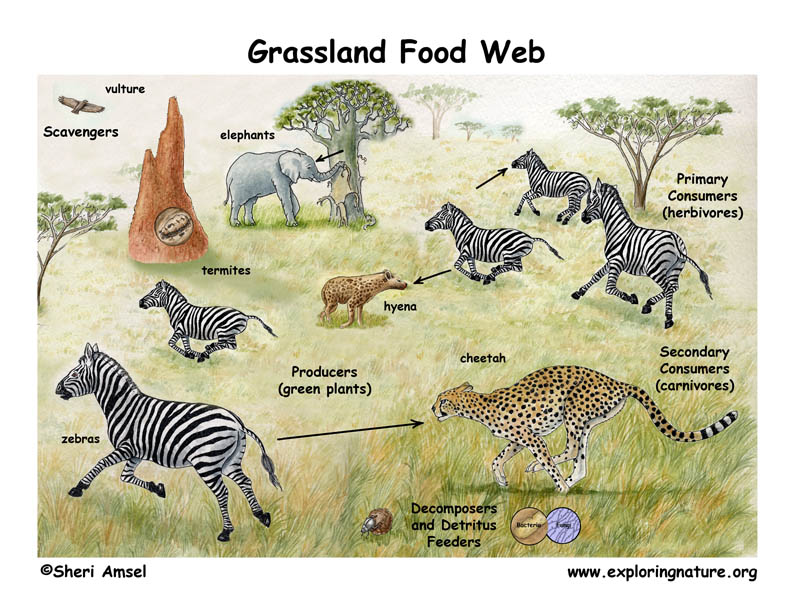
Food Webs and Energy Pyramids: Foundations of Biodiversity
Explore the wonders of biodiversity in this captivating video that takes you deep into the heart of nature\'s incredible diversity. From exotic rainforests to vibrant coral reefs, prepare to be amazed by the endless variety of life on our planet!
Decomposers: Essential for Nutrient Cycling
Decomposers play a pivotal role in the grassland ecosystem, breaking down dead organic matter and recycling it into essential nutrients that replenish the soil. This process of decomposition is vital for nutrient cycling, ensuring that primary producers have access to the nutrients they need to grow and sustain the food chain.
- Microorganisms: Bacteria and fungi are the most common decomposers in grasslands, working at the microscopic level to break down the complex compounds found in dead plants and animals into simpler substances that can be absorbed by plants.
- Insects: Many insects, such as beetles and earthworms, contribute to the decomposition process by breaking down dead matter into smaller pieces, which further aids the work of microorganisms by increasing the surface area available for decomposition.
- Detritivores: These are organisms that consume detritus (decomposing organic material), including certain types of worms, millipedes, and snails. Their feeding process helps in mechanically breaking down the matter, speeding up the decomposition process.
Through their activities, decomposers not only release nutrients back into the soil but also play a crucial role in the carbon cycle, breaking down carbon-containing organic materials and releasing carbon dioxide back into the atmosphere through respiration. This process supports the growth of new plants, which in turn supports the entire food web. Decomposers thus ensure the continuity and productivity of grassland ecosystems by facilitating the recycling of essential nutrients, promoting soil fertility, and contributing to the overall health of the ecosystem.
Grasslands Food Chain
Step into the vast and beautiful world of grasslands through this visually stunning video. Immerse yourself in the serene landscapes and discover the unique species that call these wide-open spaces home. Get ready for a breathtaking journey through the untamed beauty of grasslands!
Grassland Food Webs: A Complex Network
The grassland food web is a complex and interconnected network that illustrates the flow of energy and nutrients through an ecosystem. Unlike a simple food chain that follows a linear path, a food web showcases the multitude of feeding relationships between different organisms, from primary producers to apex predators. This intricate network highlights the interdependence of species and the resilience of the ecosystem.
- Multiple Feeding Relationships: Each organism in a grassland ecosystem can be a part of multiple food chains, acting as prey for some species and predator to others. This creates a web of interactions that stabilizes the ecosystem and helps it recover from disturbances.
- Energy Flow: Energy captured by primary producers through photosynthesis is transferred up the food web as animals feed on plants and each other. This flow of energy is crucial for the survival of all organisms in the ecosystem.
- Nutrient Cycling: Decomposers break down dead organisms, returning essential nutrients to the soil, which are then taken up by plants, starting the cycle anew. This recycling is vital for the productivity of the grassland.
- Resilience and Stability: The complexity of food webs contributes to the resilience and stability of ecosystems by providing multiple pathways for energy flow and nutrient cycling. It buffers against the loss of species and helps maintain ecosystem services.
The grassland food web demonstrates the importance of each organism, no matter how small, in maintaining the balance of the ecosystem. It underscores the concept of biodiversity, showing that a rich variety of species contributes to a healthier, more stable ecosystem. Understanding these connections is crucial for conservation efforts, as it helps us appreciate the value of all species and the roles they play in sustaining life on Earth.

Impact of Human Activities on Grassland Food Chains
Human activities have significantly impacted grassland ecosystems worldwide, influencing both the structure and function of their food chains. However, understanding these effects can guide positive action towards sustainability and conservation. From agricultural practices to urban expansion, human actions intertwine with grassland ecology, presenting challenges but also opportunities for restoration and harmony.
- Agricultural Development: Conversion of grasslands to agricultural lands alters the natural habitats of many species. Sustainable farming practices, like crop rotation and integrated pest management, can minimize harm and support biodiversity, maintaining robust food chains.
- Urban Expansion: As cities grow, grasslands are often cleared for development. Planning urban growth with green spaces and ecological corridors can mitigate these effects, allowing wildlife to move and feed across a fragmented landscape.
- Climate Change: Human-induced climate change affects grassland climates, potentially shifting vegetation patterns and water availability. Adaptive management strategies, such as conserving water resources and selecting drought-resistant plant species, can help ecosystems adjust and sustain food chains.
- Pollution: Pollution from industrial and agricultural sources can degrade grassland quality. Implementing cleaner technologies and reducing chemical use in agriculture can protect food chains from pollutants that harm plants and animals.
- Invasive Species: The introduction of non-native species can disrupt grassland food chains by outcompeting or preying on native species. Efforts to control invasive species and restore native plants and animals strengthen the resilience of food chains.
- Conservation Practices: Protecting and restoring grassland areas through conservation practices and protected areas helps maintain natural food chains. Ecological restoration, including rewilding and planting native species, supports biodiversity and ecosystem services.
Through thoughtful engagement and sustainable practices, humans have the power to positively influence grassland food chains, ensuring these ecosystems continue to thrive for future generations. Embracing a stewardship role, we can work towards a balanced coexistence that benefits both humanity and the natural world.
Conservation Efforts: Protecting Grassland Ecosystems
Conservation efforts for grassland ecosystems are crucial in preserving biodiversity, supporting ecosystems services, and maintaining healthy food chains. A multi-faceted approach combining local, national, and global initiatives offers the best path forward in protecting these vital habitats.
- Establishing Protected Areas: Designating grasslands as protected areas or national parks helps safeguard these ecosystems from development and degradation. These areas provide sanctuaries for wildlife and preserve natural food chains.
- Restoration Projects: Restoring degraded grasslands through reseeding native plants, removing invasive species, and managing fire regimes can revive ecosystems. These efforts help to rebuild the structure and function of grassland food chains.
- Sustainable Agriculture Practices: Integrating sustainable practices such as rotational grazing, cover cropping, and organic farming helps maintain soil health and biodiversity. These practices reduce the impact of agriculture on grassland ecosystems.
- Community Engagement and Education: Involving local communities in conservation efforts through education and participatory projects fosters a sense of stewardship. Community-based conservation can lead to more sustainable management of grassland resources.
- Climate Change Mitigation: Implementing strategies to reduce greenhouse gas emissions and enhance carbon sequestration in grasslands are vital. Practices like sustainable grazing and restoration can help grasslands act as carbon sinks, mitigating climate change effects.
- Research and Monitoring: Ongoing research and monitoring of grassland ecosystems are essential for understanding their health and the impacts of human activities. Data collected can inform adaptive management strategies to address emerging challenges.
- International Cooperation: Grassland conservation is a global challenge that requires international cooperation. Agreements and partnerships can facilitate the sharing of knowledge, resources, and strategies for protecting these ecosystems worldwide.
Through concerted conservation efforts, we can ensure the protection and resilience of grassland ecosystems. By valuing and actively preserving these areas, future generations will inherit a world where grasslands continue to flourish, supporting diverse species and providing essential ecosystem services.

READ MORE:
Case Studies: Grassland Ecosystems Around the World
Grassland ecosystems, diverse in their flora and fauna, span across the globe, each providing unique insights into the balance of nature, human impact, and conservation efforts. These case studies highlight the ecological significance, challenges faced, and the actions taken to preserve these vital habitats.
- Serengeti Plains, Tanzania: Renowned for its vast wildlife migrations, the Serengeti showcases the intricate interactions within a grassland ecosystem. Conservation efforts focus on balancing tourism and wildlife protection, managing poaching, and mitigating human-wildlife conflicts.
- The Great Plains, USA: Once a vast expanse of grassland, the Great Plains have been significantly altered by agriculture and urbanization. Restoration projects, such as the reintroduction of native bison and sustainable farming practices, aim to revive the prairie ecosystem.
- The Pampas, Argentina: The Pampas are characterized by their rich soil, making them prime agricultural land. Efforts to protect this ecosystem include promoting sustainable grazing practices and conserving patches of native grassland.
- The Steppes of Central Asia: Spanning several countries, the steppes are threatened by overgrazing, desertification, and climate change. Cross-border conservation initiatives seek to protect migratory routes for species like the saiga antelope and preserve steppe biodiversity.
- Masai Mara, Kenya: A critical site for biodiversity, the Masai Mara faces challenges from encroaching agriculture and infrastructure development. Community-based conservation programs aim to ensure the coexistence of wildlife and local livelihoods.
These case studies illustrate the global importance of grassland ecosystems and the diverse strategies needed to protect them. By learning from these examples, we can apply lessons in conservation, sustainable use, and restoration to grasslands worldwide, ensuring their preservation for future generations.
Discover the vital roles and intricate connections within grassland ecosystems, and join the journey towards preserving these majestic landscapes for the harmonious coexistence of all species and future generations.

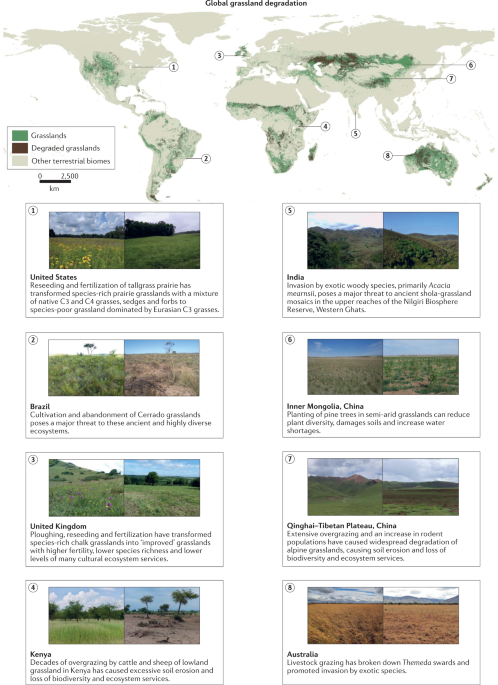


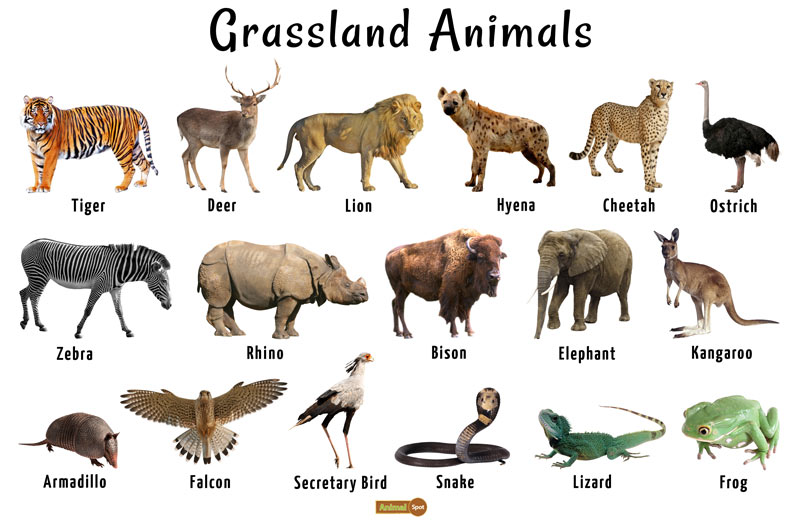
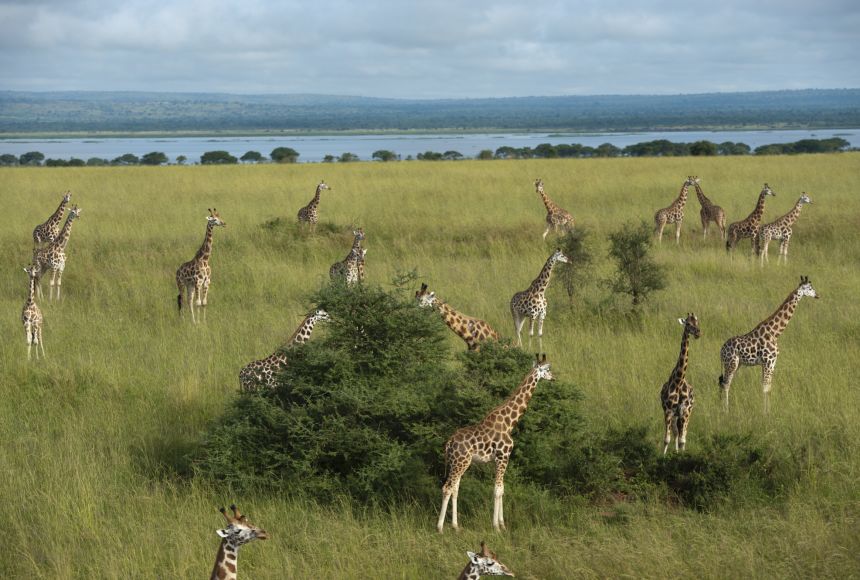


:max_bytes(150000):strip_icc()/164249141-56a006353df78cafda9fb0e5-be1ea8f1f1774e12bde868a948812d8d.jpg)






